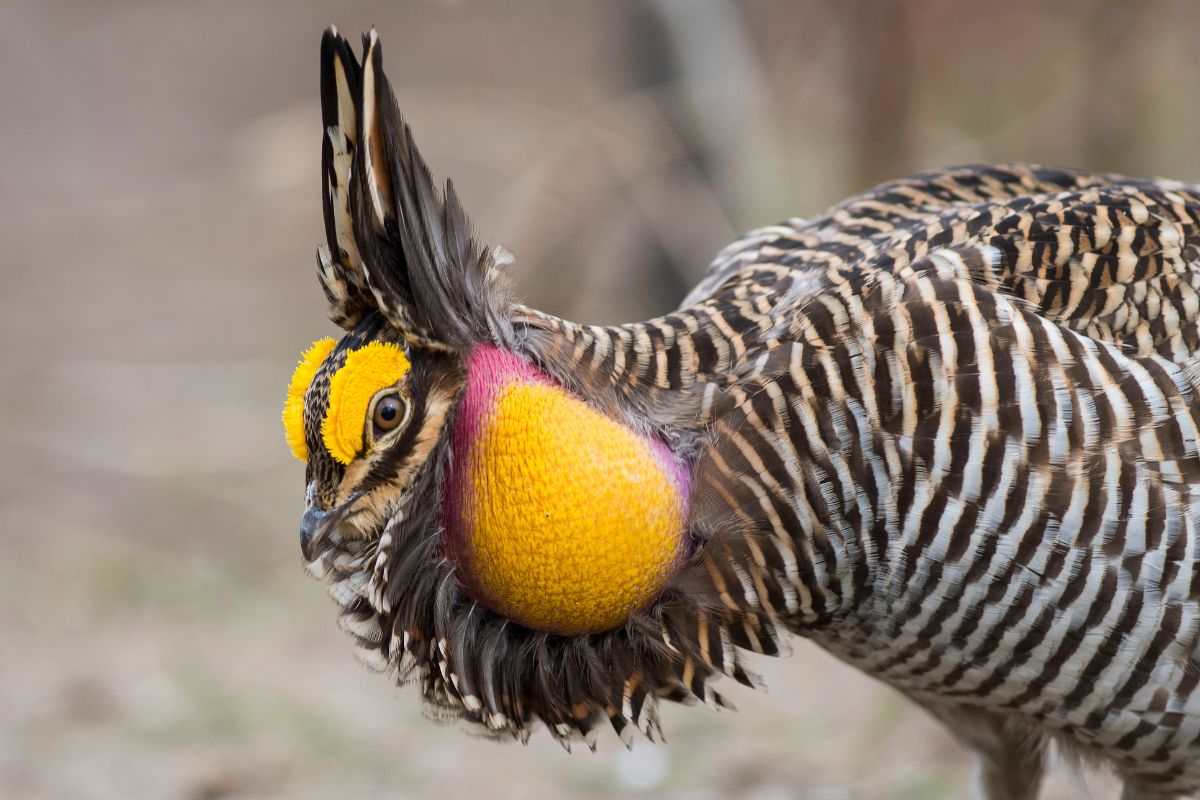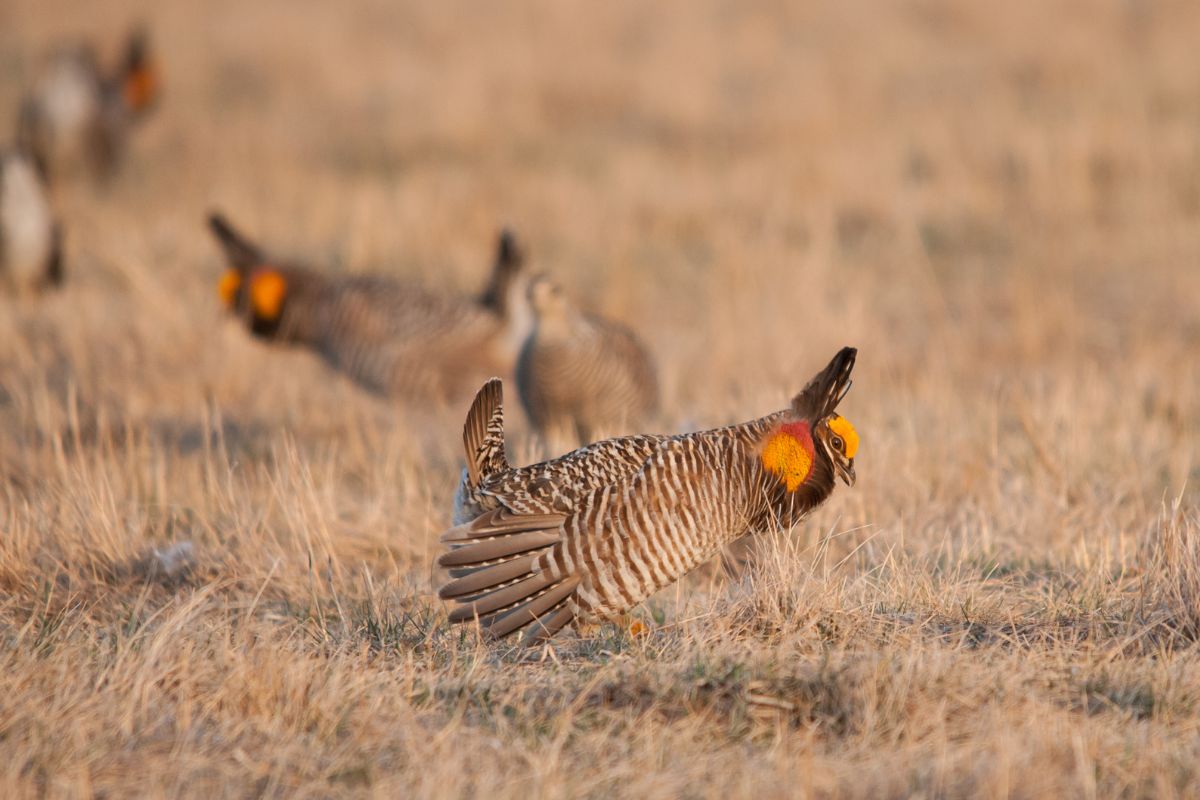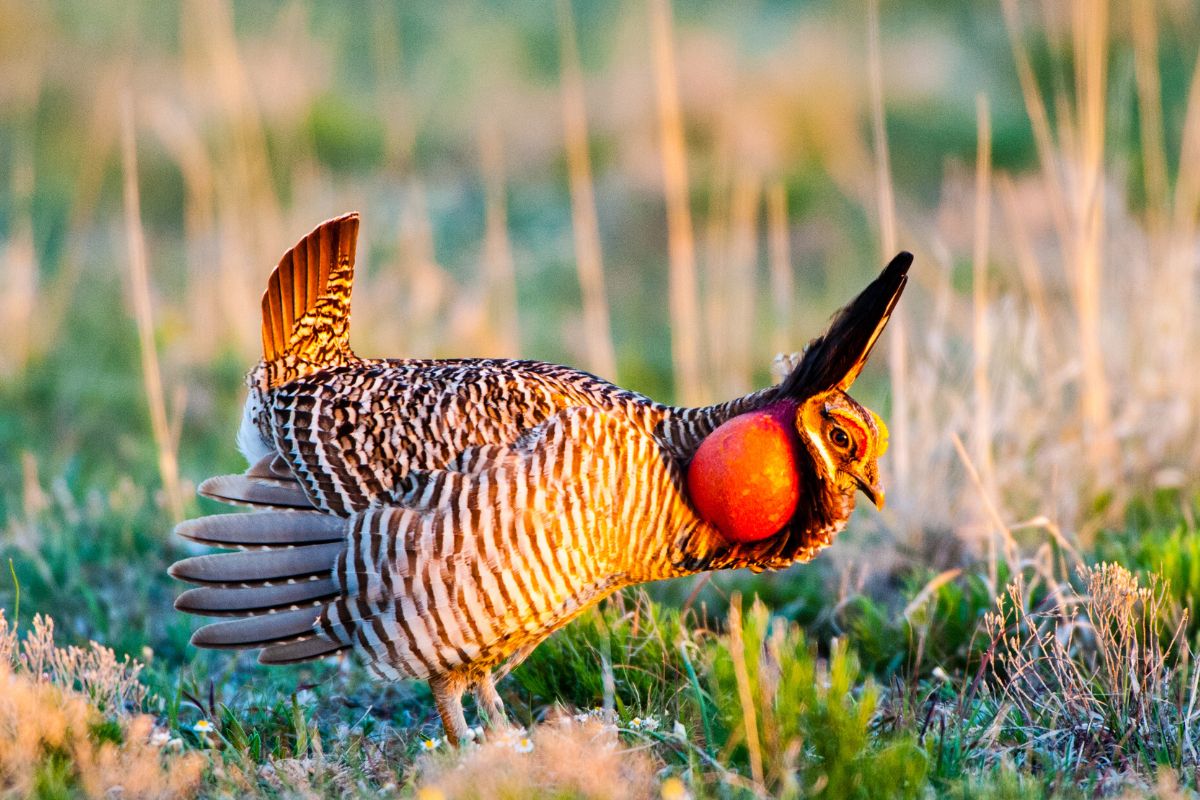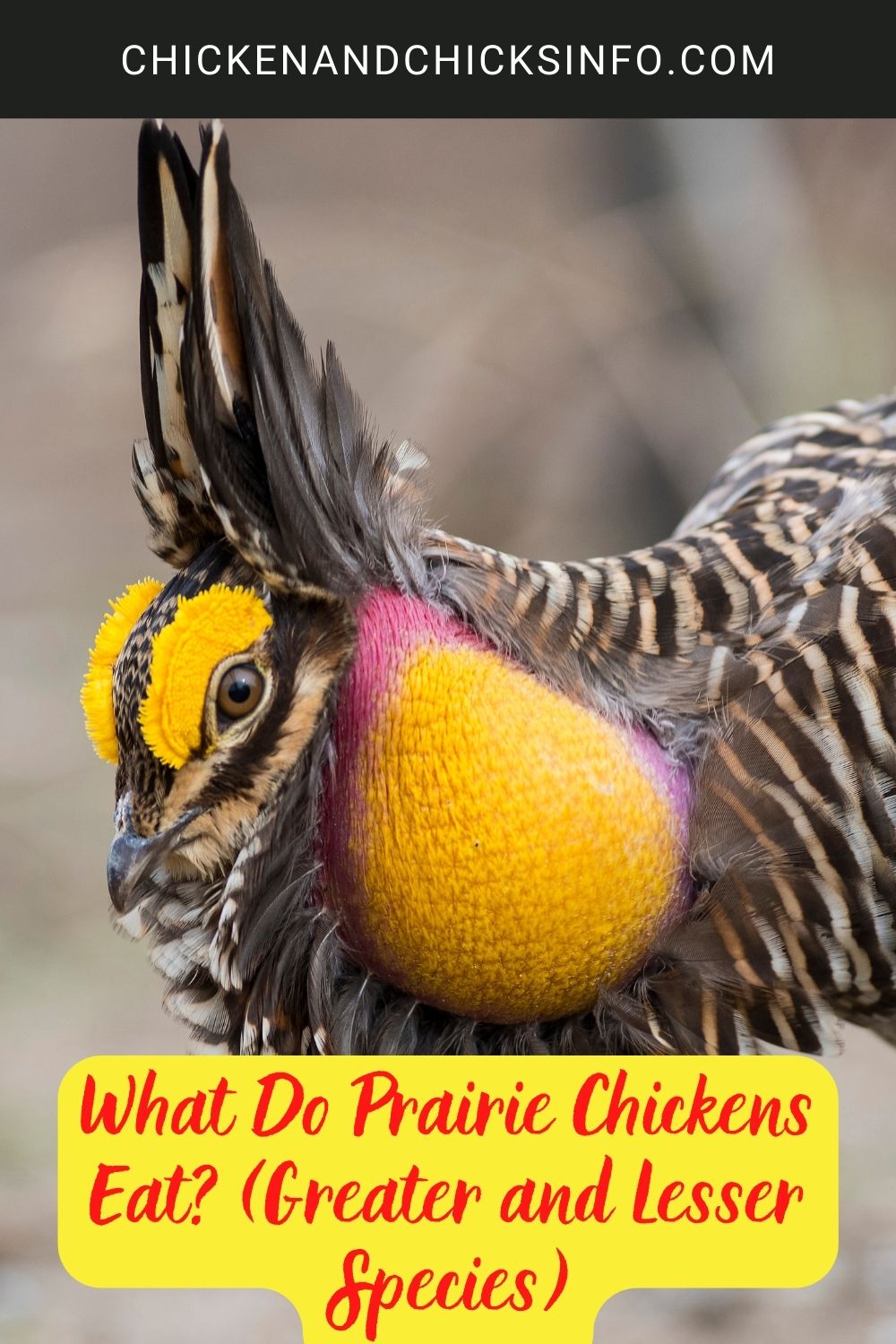
Both greater and lesser prairie chickens are omnivores and eat mostly seeds, berries, and insects. In the summer, they’ll find more insects and bugs, and in the winter they rely more on grains, leaves, seeds, and other stuff they find foraging.
Jump to:
Where To Prairie Chickens Live?
Prairie chickens also called Pinnated grouse and boomers, are native to North America. They were once living in abundant numbers across the Midwest and northern central plains.
Unfortunately, a sad reality is that this species is now extremely rare. This is largely due to habitat loss such as developments taking up their habitat.
They can live on agricultural land, but prefer to live in tallgrass prairies - hence their name. This is mainly because they eat the plants and bugs found in this kind of landscape and create nests in weeds.
The Prairie chicken has been close to extinction. It’s totally due to human interactions that they’ve been reducing in numbers.
Due to deliberate efforts to help conserve them, numbers are climbing again. According to Wikipedia, a rough estimation is that there are around 500,000 Prairies.
There are some large Lesser Prairie populations in New Mexico, Oklahoma, and Kansas. Greater Prairies can be found throughout North America.
In fact, at the time of writing this, there were six states with huntable populations. That’s not my idea of a good time, but obviously, hunting is big business.
Differences Between Lesser and Greater Prairie Chickens

You may have noticed there are two classifications of Prairie’s; Greater and Lesser Prairie chickens.
As far as I can tell, apart from the Greater being a physically larger bird, there are just a few subtle physical differences that separate these two birds:
Greater Prairies have more prominent feathers on their neck called pinnae. They also have a bright yellow eye comb and an air sack on their necks that is an orange to yellow color.
The main difference you’ll notice when looking at a Greater and Lesser bird together is that the Lesser Prairie-Chicken has a red air sack, opposed to the yellow one on the Greater.
If you want to see the differences for yourself and witness one of the greatest mating rituals I’ve personally ever seen, here is a video of Lesser and Greater Prairie Chickens stomping and booming for females:
What Do Greater Prairie Chickens Eat?
Both species are omnivores and eat seeds, grains, leaves, acorns, fruits, beds, and various other plants they find. They also eat most insects, such as grasshoppers, crickets, ants, beetles, and all the usual bugs most backyard chickens eat.
They are great foragers, as you’d expect for wild chickens that are able to survive just fine in the wild (unless they experienced habitat loss as I covered above).
Prairies are also great flyers, which usually comes as a surprise to those familiar with backyard checked breeds. I say this because they aren’t too different in size and appearance to most chicken breeds, yet they can fly several miles at a time with ease.
So, they’re able to find food on land, in trees, or in more difficult to reach places.
What Do Lesser Prairie Chickens Eat?

Lesser Prairies have the same diet and eat the same things as Greater Prairies. The differences between the two are in appearance, not in behaviors.
So, this means they also eat all kinds of bugs and insects. Typically insects that are found in long grass, like grasshoppers, crickets, Japanese beetles, ants, armyworms, grubs, etc.
They also eat vegetation, like bushes, grains, alfalfa, berries, and so on. As long as they have prairies to roam on, there isn’t usually a shortage of food options.
What Do Prairie Chickens Eat in the Winter?
Interestingly Prairie chickens are pretty cold-weather hardy. In fact, they can be seen diving into deep snow as a way of keeping warm.
It was once thought severe winter weather was contributing to their dwindling numbers. This is now known not to be true, although heavy rainfall can kill chicks or wash nests away.
There are a lot fewer insects to eat in the winter. So, they simply switch up their diet and eat more plant matter.
Being omnivores, Prairies can survive on both meat and plants. The proteins and other nutrients in insects are important to their long-term health but reducing their intake during the winter months isn’t an issue.
In Summary
Prairie chickens are not kept as backyard chickens, but I’ve always been fond of them when seeing them on wildlife programs and wanted to help raise some awareness for this wonderful species.
As you can see, they eat a diet very typical of most chickens in the wild. They will eat bugs, insects, and plant matter. Pretty much taking up whatever opportunities present themselves, and they do just fine scavenging and scratching around.





